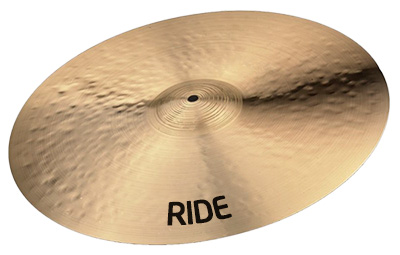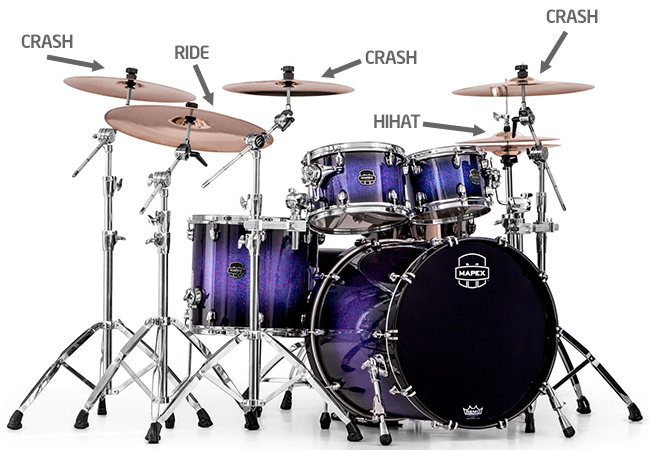What Is a Ride Cymbal?

The ride cymbal is one of the most important elements of the drum kit. But what is a ride cymbal actually used for and what should you consider when buying a ride cymbal?
What Is a Ride Cymbal Used For?
The primary function of the ride cymbal is to be a time keeper. Typically by playing the quarter or eight notes of the groove. If you play pop or rock, you will typically see that this takes place on the hi-hat in the verse and you may switch to the ride cymbal in the chorus. Since the hihat has a shorter and more defined sound, the more open-sounding ride cymbal will therefore often give a feeling of "opening up", which is often an appropriate function in the chorus of a song.
If you play jazz, however, it is a little different. In jazz, it is not the bass drum and the snare drum that have the "driving force" in the groove, instead it is the ride cymbal. Here, the snare drum and bass drum should have a much lighter touch, in a more complementary role which is why the ride cymbal has a much more crucial role in jazz. This probably also explains why jazz drummers often are very picky on their choice of ride cymbals - it is where your main focus is at.
Different Models
A ride cymbal often has a size of 20 to 22 inches. However, it is possible to find 18" ride cymbals (especially crash/ride - but more on that later) and 24" ride cymbals are actually not uncommon.
The most typical kinds of rides are ride, light ride, crash ride, medium ride, heavy ride, and rock ride. These designations are all indicators of the thickness of the cymbal. Flat rides are a bit different. These are cymbals without a bell in the middle and this gives a very different soft sound and flat rides do not produce much volume.
Different Purposes
Many different aspects play a role in shaping the tone of a ride cymbal and the cymbal's ability to be heard: size (diameter), thickness, curve, and hammering.
Some drummers like to have a nice and clear attack so that the cymbal does not completely disappear when the music starts. This is especially if you play music with a sound dominated by distorted electric guitars. Here you simply must have a clear attack and volume in the tone.
Other drummers prefer softer, darker, or wetter sounding cymbals. These cymbals have less of a clear attack. Here, it may become a problem that the cymbals diasppear in the mix of the other instruments when the music gets too loud. On pop/rock recordings you can sometimes feel the pulse disappear from the overall sound when the drummer goes from the hihat to the ride cymbal. This specific phenomenon makes the ride cymbal one of the most difficult cymbals to choose. This is especially if you are a versatile drummer that plays a lot of different styles.
For jazz drummers, as mentioned earlier, it is of utmost importance to find the correct rides as these to a high degree define the jazz drummer's sound.
When Buying a Ride Cymbal
When buying a ride cymbal, it is important that you know what you are looking for and what you will use your ride cymbal for.
You should consider the size. Do you already have an idea of what size you are looking for? Does the cymbal need to be crashable? How hard do you hit your cymbals? These questions may end up changing your idea of what kind of ride cymbal you are looking for.
Start by listening to a wide variety of ride cymbals. You can do that right here. This will probably make you realize that you already have an idea of what you are looking for.
Happy hunting - for some drummers, the hunt never really ends. :-)
More Information
- You can read more about the anatomy of a cymbal in this article.
- You can hear a wide variety of ride cymbals here.

Would You Like a €15 Voucher For Cymbals?
If you sign up for our newsletter, you automatically receive a €15 voucher for your next cymbal at CymbalONE.
